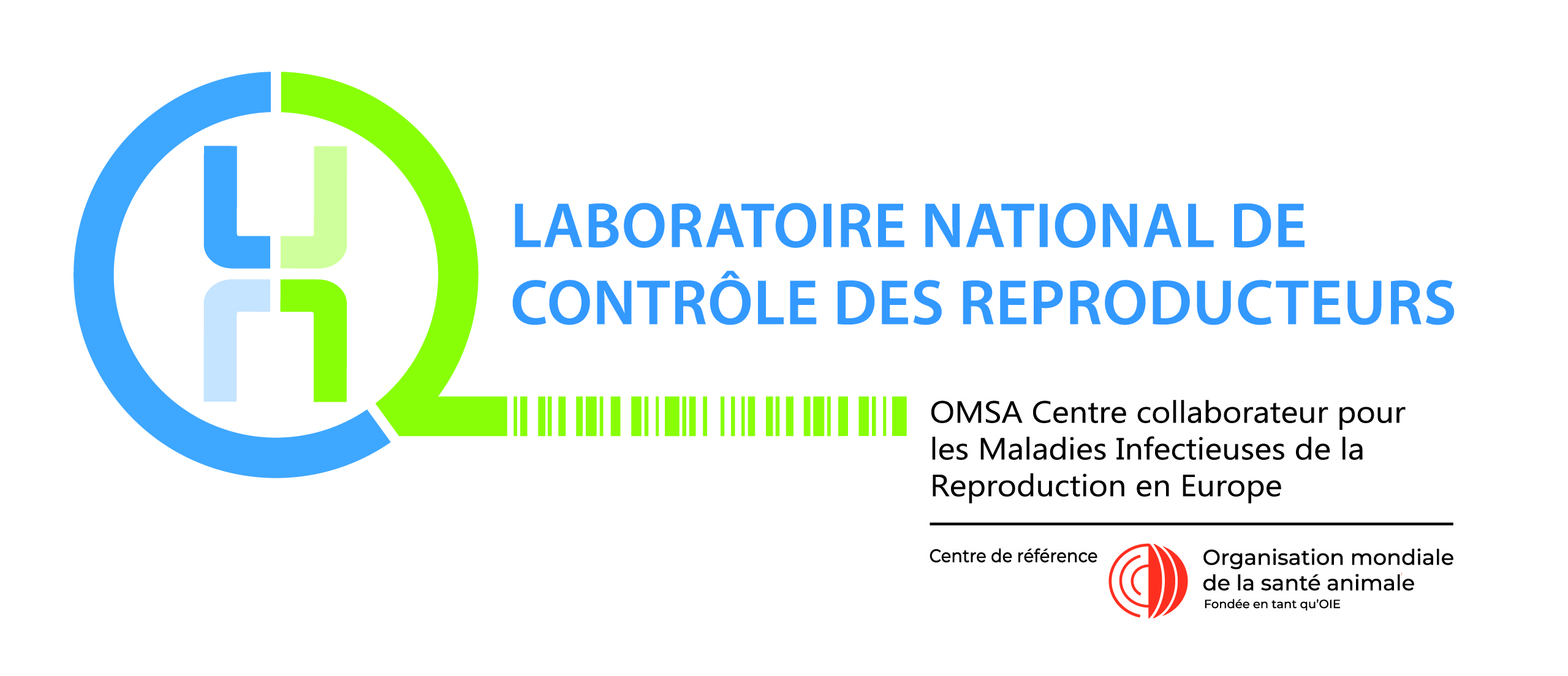Technical Units
1. Andrology
The andrology laboratory assesses semen quality using methods that can be carried out as part of routine checks, as well as more advanced techniques that can reveal motility or structural abnormalities in sperm cells. More than 12 000 semen samples are evaluated each year. The spermogramme and the other examinations connected with semen quality constitute the basic analyses for the recognition of the aptitude of a breeding animal to be used for artificial insemination. These examinations bring into play numerous cytological, biochemical and biological tests like in vitro fertilization. Combined with bacteriological and virological tests, this whole series of examinations guarantees the fertilizing power and the health quality of semen produced in France.
2. Molecular biology
The molecular biology unit focuses on the detection of pathogens responsible for diseases that impact fertility, sexually transmitted diseases, and even general diseases whose agents may be excreted in semen and contaminate cows during insemination. The activity of the molecular biology department detects the genome of pathogens in biological samples to be tested. This technique also has the advantage of being very rapid, since a pathogen can be identified within a few hours by PCR, whereas several months are sometimes needed when using a bacteriological technique for example. Some specific PCR protocols have been developed in order to increase the sensitivity of diagnostic tools, as Campylobacter or Trichomoniasis and are used as additional self-control tools by French semen collection centers.
3. Serology
The mission of LNCR’s sero-immunology unit is to diagnose infectious diseases with either viral or bacterial etiologies. The diagnosis of diseases relies on detecting specific antibodies of pathogens (bacteria and viruses) that have sensitized diseased animals, as opposed to unaffected animals that have therefore never been sensitized by the corresponding infectious agents and thus, have no specific antibodies in their blood. In order to achieve maximum efficiency, LNCR became the first laboratory in France to make use of an equipment line coupling automatic distribution (TECAN) with automatic testing (BEP III), allowing several different tests to be carried out at the same time.
4. Bacteriology
The bacteriology department aims to focus on diseases with a bacterial etiology, including both general diseases such as brucellosis and tuberculosis and genital diseases such as campylobacteriosis and trichomoniasis. The bacteriology department makes use of a wide range of methods. They have in common the identification of pathogens in order to diagnose the corresponding diseases. The bacteriology laboratory’s activity is mainly concerned with the control of sexually transmitted diseases such as campylobacteriosis, trichomoniasis (cattle and sheep), infectious epididymitis (sheep), Johne’s disease (paratuberculosis) and contagious equine metritis.
5. Virology
The virology unit carefully separates its activity into two distinct areas, with access rules and hygiene protocols: the “safe” area where the cells are prepared, and the “contaminated” area where the samples are tested. Both areas are separated by an airlock where the technicians change their clothing and footwear in order to maintain hygienic and aseptic conditions. Diagnosis of viral diseases may involve direct detection of viruses in samples (bovine diarrhea virus for the detection of viraemia, virospermic animals) or the detection of antibodies by using doses of live virus (sero-neutralisation tests). Both methods use the properties of viruses to infect sensitive cell cultures and multiply in the cytoplasm or in the cell nucleus. The particular pathogenesis of certain viruses makes it necessary to search for them in different biological liquids such as blood or sperm. The different virological methods such as cellular culture, as virus isolation on cellular culture are therefore used as a matter of routine. LNCR is therefore, permanently adapting its analysis methods with a view to seeking the best sensitivity and the best specificity.
6. Hormonology
Major limitations to AI in female ruminants are failure to detect estrus, improper timing of insemination and pregnancy failures related to embryonic death. Various hormonal assays to follow ovulation and pregnancy have been developed to reduce or eliminate these limitations. Progestin, estradiol and luteinizing hormone can be measured in serum or plasma samples using radio-immuno or ELISA assays. Since 20 years, the laboratory proposed pregnancy checks in ruminants, based on specific pregnancy associated proteins (PAGs). In the male population, semen production and quality are also linked to steroid hormones as androstenedione, testosterone. With genomic selection, use of young bulls will become a critical point. New hormonal assays will be proposed to ensure an optimal semen production in such young animals. Recently, it was decided to develop a unit dedicated to hormonology in exotic species with specific tools (PCR assays from faeces samples) to follow cyclicity and pregnancy for several zoological parks. Many species as elephant, giraffe and rhinoceros are followed in our laboratory since a few years.


